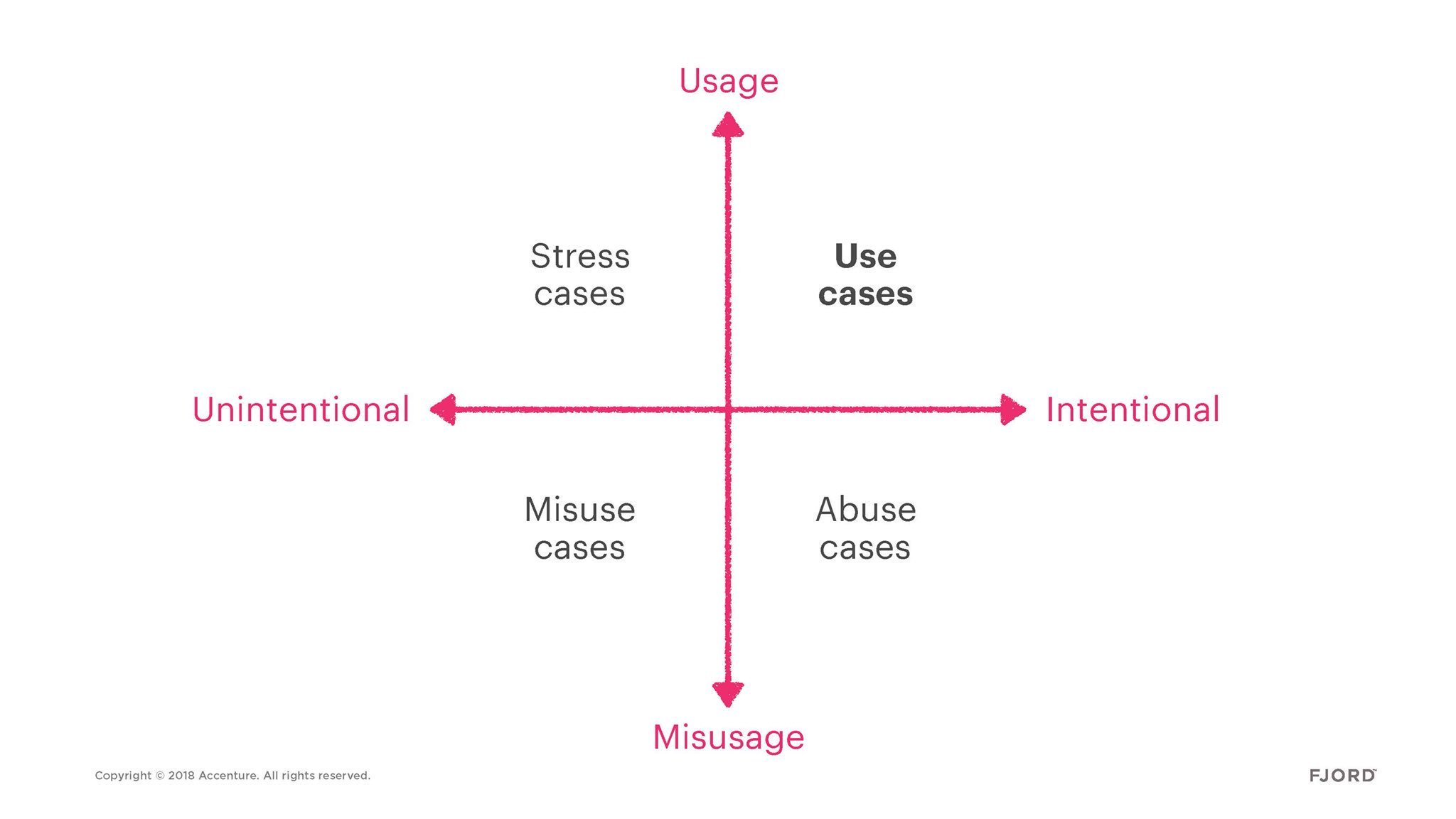A couple weeks ago I saw this little diagram on Twitter and it immediately resonated. Anyone who has ever built a product will immediately recognize the two axes and four quadrants.

The four ways someone can use your product.
Often developers—and, to a lesser extent, product creators—are trained as to anticipate all possible ways someone could use our product; cases which include all four quadrants on this diagram.
However, if your goal is to ship products, you can often get away with ignoring everything except the upper right. Yep, that’s right. Ignore your edge cases. This will often greatly simplify your life and save you loads of time. And by focusing on the people who are intentionally using your product correctly you are almost certainly optimizing for the people you really want to reach.
How does this work in the real world? It usually entails taking massive shortcuts or making assumptions that aren’t always valid, but that let you ship much faster.
Here’s a fun example from one of my products. When you buy place cards from Place Card Me I show a message that says you will get “up to 30 days to edit your cards,” after which, presumably they lock/turn into readonly mode or something.

The message people see before they purchase place cards.
But, I didn’t feel like building out all that logic so I just never bothered! What that means is that everyone who has ever used Place Card Me has received a lifetime supply of free place cards.
This created a huge possible hole in the “intentional misuse” bucket. What if people who bought place cards shared the magic link with their friends? What if they made place cards every week and never had to pay again? Well, I decided I didn’t really care about those what ifs, shipped the feature and moved on with my life.
Fast forward a year and I decided to finally go back and look how many people actually ended up taking advantage of this loophole. Of the 1,500 sales, how many people edited their cards outside the 30-day documented window? The answer was fifteen. So literally less than 1% of my customers. If you broaden the date range to sixty days the number goes down to four.

The complete list of sessions that violated my “edit for 30-days” rule.
So are people abusing the site? Yes, it looks like maybe a handful are. Two people even edited their cards more than six months after purchasing them.
That said, should I have bothered building out a way to prevent that from happening? I’d say almost certainly not.
In most cases, you can focus on intentional usage for a long time and you’ll save yourself a lot of time and energy!
In conclusion: stop worrying about your edge cases.* If they’re important enough to address they’ll make themselves known eventually.
* I should caveat that in certain domains/fields—especially those prone to financial or privacy/security exploitation—this is probably a terrible idea. Make sure you understand the worst possible scenarios before taking this advice.